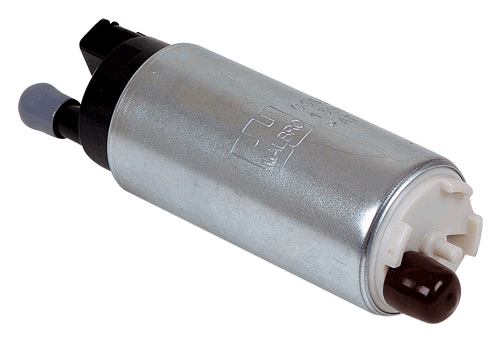A fuel pump serves to maintain a steady stream of fuel flowing from the tank of car to its engine. So when it fails, the engine just can’t get enough fuel to perform well. The failure of a fuel pump can be the result of many reasons. Sometimes, you’ll need to replace the whole unit.
Types of Fuel Pumps
There are two major types of fuel pumps: mechanical fuel pumps and electrical fuel pumps. Mechanical fuel pumps are more common with older vehicles. The primary feature of a mechanical pump is the inclusion of a carburetor. Mechanical fuel pumps first deliver fuel into the carburetor before it is sent into the engine. Because of this two-stage delivery process, mechanical pumps are less effective than electric fuel pumps.
Electric fuel pumps come with a fuel injection system that delivers fuel directly into the engine. This type of pump is common with newer cars. Compared to mechanical fuel pumps, electric fuel pumps deliver fuel at a higher pressure, which allows for smoother performance. Instead of carburetors, electric fuel pumps are equipped with fuel injectors. Electric fuel pumps are more commonly located near the fuel tank while mechanical fuel pumps are closer to the engine.
What to Consider When Choosing a Fuel Pump
Fuel pumps come in different shapes and sizes and with varying features. When searching for a replacement fuel pump, drivers must ensure that they choose the right fit for their engine. Different factors affect the selection of a fuel pump. However, the most important determining factors include the engine’s fuel efficiency, horsepower, voltage, and the maximum fuel system pressure.
Engine Fuel Efficiency
The efficiency of an engine is the amount of fuel required to produce 1 HP for 60 minutes. It is also known as the engine’s Brake Specific Fuel Consumption (or simply BSFC). Modern engines fall into three broad categories based on their BSFC rating.
Engine Type: Normal Aspirated Engine
Industry B.S.F.C Standards: .45 – .5
Engine Type: Super charged engines (nitrous combinations)
Industry B.S.F.C Standards: .55 – .60
Engine Type: Turbo charged engines (forced induction)
Industry B.S.F.C Standards: .6 – .65
These figures are just general guidelines. Drivers can determine the exact BSFC of their engine by conducting an engine dyno test.
Fuel Volume
A car’s fuel volume is reliant on its horsepower rating and BSFC. Drivers can calculate the average fuel requirement by multiplying these two values. For instance, for a 650 HP engine with a .45 BSFC, the amount of fuel required equals 660 multiplied by .45, which is 292 lbs of fuel. The more efficient the engine, the higher the BSFC and the amount of fuel required. When shopping for an electric fuel pump, it is best to play it safe. Drivers who are unsure of their car’s horsepower should consult with an experienced mechanic. Basing calculations on the wrong HP estimates can lead to serious engine damage.
Voltage
Modern electric fuel pump systems rely on electricity. Fuel injectors are designed to work within certain voltage limits. When choosing a fuel pump, drivers must select pumps that fit with the voltage output of the engine. For instance, attaching a fuel pump designed to work with 12 volts to another vehicle that outputs 13.5 volts, increases the volume of fuel being pumped by as much as 40 percent. This can quickly lead to pump issues. Excessive voltage can also affect the fuel pump relay.
Diagnosing a Faulty Fuel Pump
The biggest indication of a faulty fuel pump is an irregular supply of fuel to the engine. When a fuel pump is bad, the vehicle may begin to lose power, jerk while in motion, or simply not start. If a fuel pump develops an irreparable problem, drivers can opt to either replace the faulty unit on their own or take it to a skilled mechanic.
Because fuel is highly flammable, it is important that drivers only perform the replacement on their own if they are confident of achieving this successfully. It also helps if drivers work with a pump replacement guide to figure out key issues like where the fuel pump is located.

What to Consider When Choosing a Fuel Pump
by
Tags:
